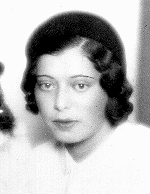
The Nazi persecution of persons with disabilities in Germany was one component of radical public health policies aimed at excluding hereditarily “unfit” Germans from the national community. These strategies began with forced sterilization and escalated toward mass murder. The most extreme measure, the Euthanasia Program, was in itself a rehearsal for Nazi Germany’s broader genocidal policies.
The ideological justification conceived by medical perpetrators for the destruction of the “unfit” was also applied to other categories of “biological enemies,” most notably to Jews and Roma (Gypsies). Compulsory sterilization and “euthanasia,” like the “Final Solution,” were components of a biomedical vision which imagined a racially and genetically pure and productive society, and embraced unthinkable strategies to eliminate those who did not fit within that vision.....
AN OPEN SECRET
On July 14, 1933, the German government instituted the “Law for the Prevention of Progeny with Hereditary Diseases.” This law called for the sterilization of all persons who suffered from diseases considered hereditary, including mental illness, learning disabilities, physical deformity, epilepsy, blindness, deafness, and severe alcoholism. With the law’s passage the Third Reich also stepped up its propaganda against the disabled, regularly labeling them “life unworthy of life” or “useless eaters” and highlighting their burden upon society.
The term “euthanasia” (literally, “good death”) usually refers to the inducement of a painless death for a chronically or terminally ill individual. In Nazi usage, however, “euthanasia” referred to the systematic killing of the institutionalized mentally and physically disabled. The secret operation was code-named T4, in reference to the street address (Tiergartenstrasse 4) of the program's coordinating office in Berlin.
Ashes from cremated victims were taken from a common pile and placed in urns without regard for accurate labeling. One urn was sent to each victim's family, along with a death certificate listing a fictive cause and date of death. The sudden death of thousands of institutionalized people, whose death certificates listed strangely similar causes and places of death, raised suspicions. Eventually, the Euthanasia Program became an open secret.
On August 18, 1939, the Reich Ministry of the Interior circulated a decree compelling all physicians, nurses, and midwives to report newborn infants and children under the age of three who showed signs of severe mental or physical disability. At first only infants and toddlers were incorporated in the effort, but eventually juveniles up to 17 years of age were also killed. Conservative estimates suggest that at least 5,000 physically and mentally disabled children were murdered through starvation or lethal overdose of medication.
http://www.ushmm.org/museum/exhibit/focus/disabilities/




